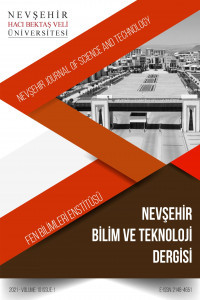Uluslararası İnşaat Projelerinde Taşeron Seçimi İçin Karar Kriterleri
karar verme, uluslararası projeler, seçim kriterleri, alt yüklenici, İnşaat projeleri
Decision Criteria for Subcontractor Selection in International Construction Projects
Construction projects, decision-making, international projects, selection criteria, subcontractor,
___
- [1] Ulubeyli S., Manisali E., Kazaz A., “Subcontractor selection practices in international construction projects” Journal of Civil Engineering and Management, 16, 47-56, 2010.
- [2] Ulubeyli S., “Fuzzy Multiple Criteria Decision Making Model for Subcontractor Selection in International Construction Projects”, Istanbul University, Graduate School of Natural and Applied Sciences, PhD Thesis, 161p, İstanbul, 2008.
- [3] Babbie E., “The Practice of Social Research”, Wadsworth Publishing, 584p, Belmont, 2007.
- [4] Ross T. J., “Fuzzy Logic with Engineering Applications”, McGraw Hill, 585p, Singapore, 2010.
- [5] Saaty T., “Measuring the fuzziness of sets” Journal of Cybernetics, 4, 53-61, 1974.
- [6] Yoon K., Kim G., “Multiple attribute decision analysis with imprecise information” IIE Transactions, 21, 21-25, 1989.
- [7] Severson G. D., Jaselskis E. J., Russell J. S., “Trends in construction contractor financial data” Journal of Construction Engineering and Management, 119, 854-858, 1993.
- [8] Winch G., “The growth of self-employment in British construction” Construction Management and Economics, 16, 531-542, 1998.
- [9] FIDIC, “Conditions of Contract for Construction”, FIDIC, Switzerland, 1999.
- [10] Ngai S .C., Drew D. S., Lo H. P., Skitmore, M., “A theoretical framework for determining the minimum number of bidders in construction bidding competitions” Construction Management and Economics, 20, 473-482, 2002.
- [11] Hiyassat M. A. S., “Construction bid price evaluation” Canadian Journal of Civil Engineering, 28, 264-270, 2001.
- ISSN: 2148-466X
- Yayın Aralığı: Yılda 2 Sayı
- Başlangıç: 2012
- Yayıncı: Nevşehir Hacı Bektaş Veli Üniversitesi
Fenton ve Fotofenton Prosesleri ile Atıksudaki Aspirinin Giderim Verimliliğinin Karşılaştırılması
Sevde ÜSTÜN ODABAŞI, Bareera MARYAM, Hanife BÜYÜKGÜNGÖR
Şakir ERDOĞDU, Ufuk KANDİL, Memduh NAS, Şirin KURBETCİ, Safa NAYIR
Bazalt Fiberle Güçlendirilmiş Doygun Silt Zeminin Mekanik Davranışının Deneysel İncelemesi
Cyrille Prosper NDEPETE, Sedat SERT
Bazı İlaç Kalıntılarının US ve US/H2O2 Prosesleri ile Giderimi
MOF-5 Bağlı Karışık Matriksli Membranların Sentezi, Karakterizasyonu ve Gaz Ayırma Özellikleri
Hülya AYKAÇ ÖZEN, Bahtiyar ÖZTÜRK, Hamdi ÖBEKCAN
Katı Atık Depolama Alanlarında Sızıntı Suyunun Killi Zeminden Geçerken Adsorpsiyonunun İncelenmesi
Güler TÜRKOĞLU DEMİRKOL, Gökhan BALCIOĞLU, Sevgi GÜNEŞ DURAK, Türkan ORMANCI ACAR, Neşe TÜFEKCİ
Sulardan Humik Asit Gideriminde Demir Kaplı Zeolitle (DKZ) Katalitik Ozonlama
Kızılırmak Havzasının Hidrometeorolojik Verilerinin Trend Analizi
Burcu ERCAN, Mehmet İshak YÜCE
Muhammed Azim EIRGASH, Vedat TOĞAN, Aynur KAZAZ
Tekstil Endüstrisi Atıksularının Arıtımında Kullanılan Proseslerin Araştırılması
